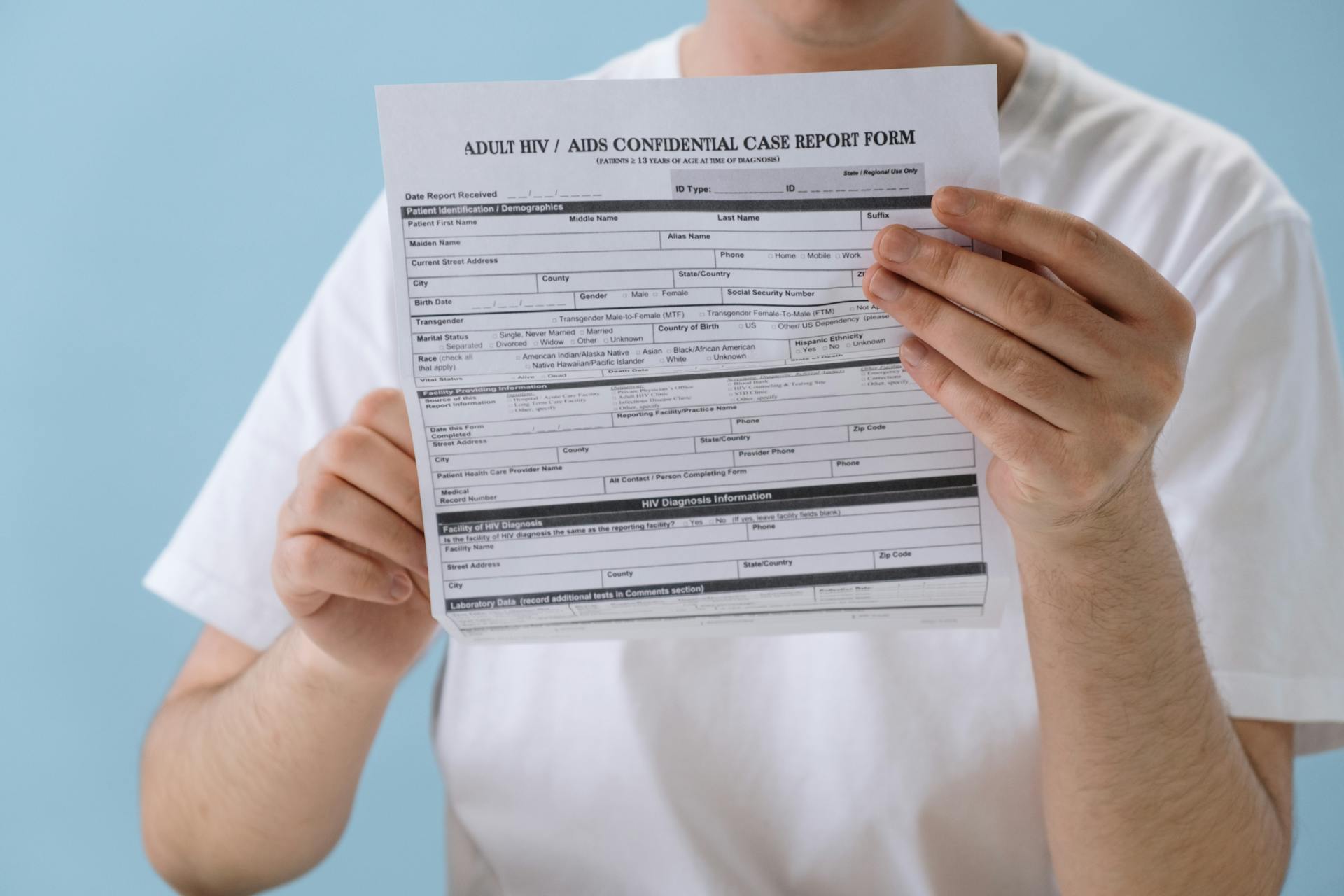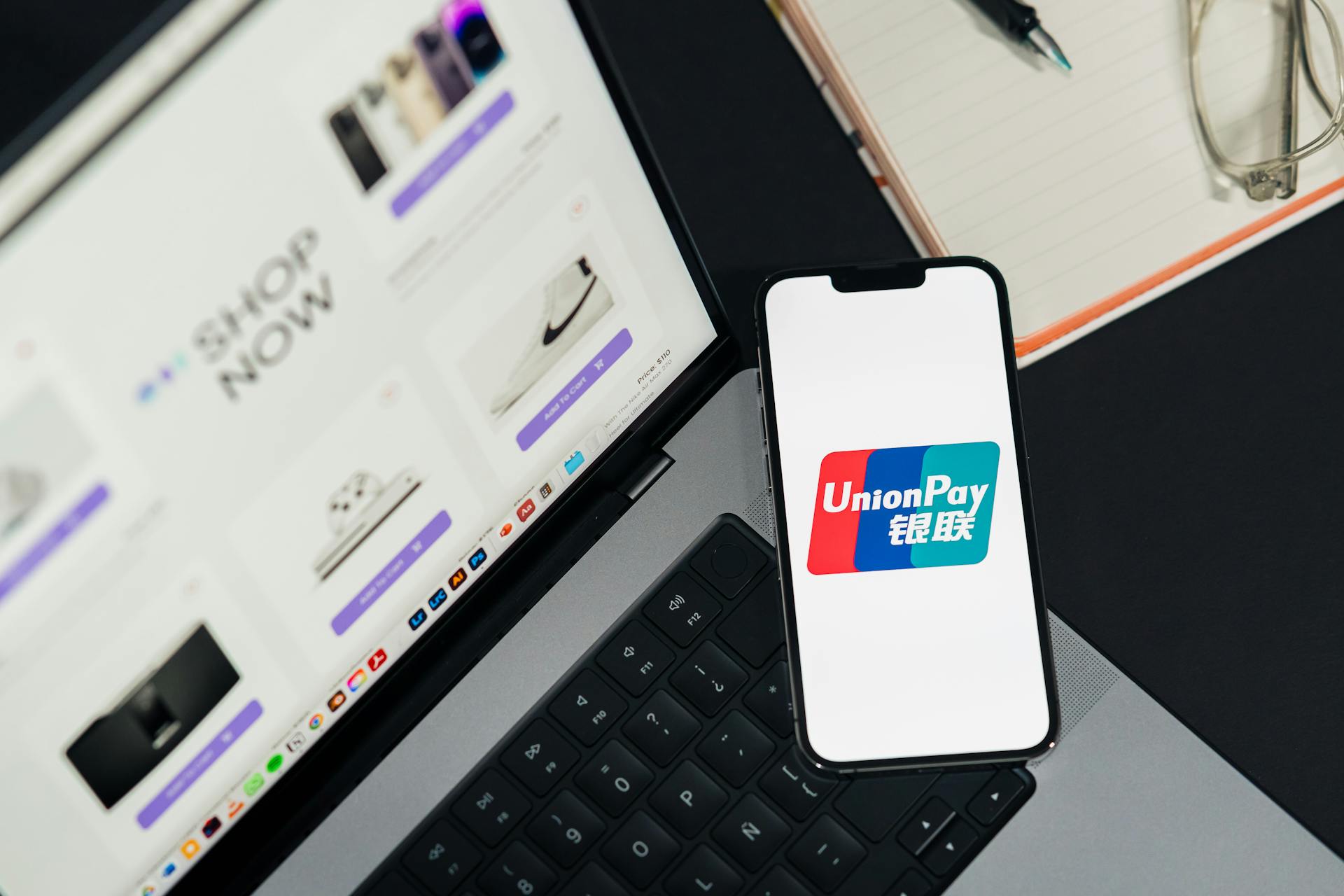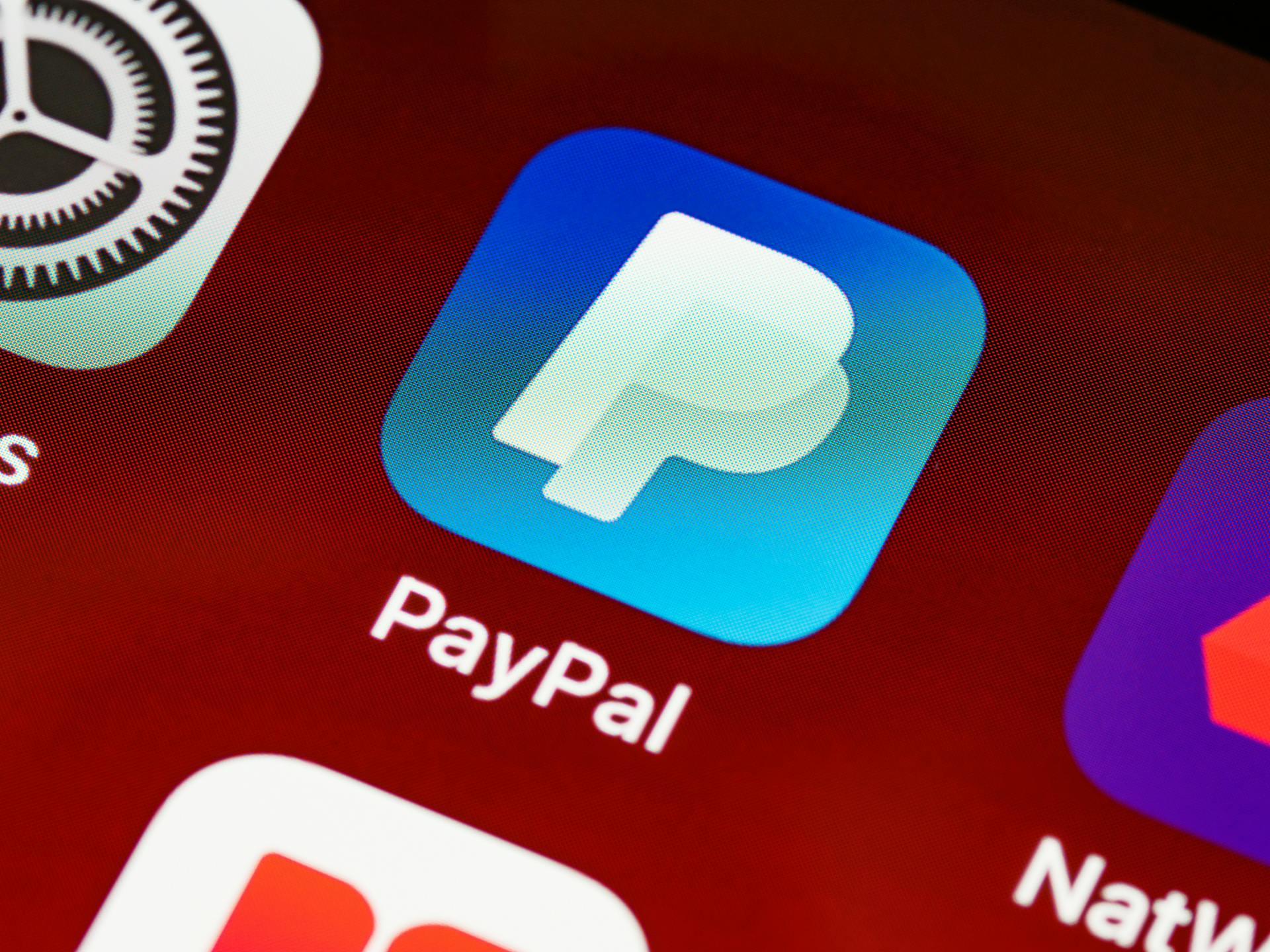
Before you start filling out a personal loan application, make sure you have all the necessary documents ready. This includes your identification, proof of income, and proof of address.
You'll want to choose the right loan type for your needs, such as a secured or unsecured loan, and consider the loan term and interest rate.
Be honest and accurate when filling out the application, as any misrepresentation can lead to loan denial or even legal issues.
Start by providing your personal details, including your name, date of birth, and social security number, as required by most lenders.
Before You Apply
Before you apply for a personal loan, it's essential to check your credit. Your credit history and credit scores can affect whether a lender will approve you for a loan and the interest rate they offer.
Your credit score can make or break your loan application, so it's crucial to review it before applying. Lenders consider your credit history when reviewing your loan application, and good credit can make it easier to get a loan and a favorable interest rate.

You can use the Credit Karma app to check your Equifax and TransUnion credit reports for free. Just sign up for an account to get your credit scores.
Keeping your credit card use low and paying on time and in full each month can help improve your credit score over time. Avoid applying for new lines of credit too often, as this can make you appear as a risky borrower to lenders.
Once you've checked your credit, you're ready to apply for prequalification. This will give you an idea of how much you can borrow and what interest rate you might qualify for.
Getting Prequalified
Getting prequalified is a crucial step in the personal loan application process. You can get prequalified with multiple lenders to compare rate quotes and find the best offer.
To get prequalified, you'll typically need to provide some basic information, such as how much you want to borrow, how you'll use the money, your annual income, your employment status, and the last four digits of your Social Security number.
Getting prequalified doesn't mean you're approved for a loan, but it helps you understand whether you're likely to be approved and the loan terms you may qualify for. If you decide to pursue an offer, you'll still need to submit a formal application, which will make a hard inquiry into your credit.
You'll want to try to get prequalified with at least three to five lenders to get a good sample of offers. This process typically only takes a few minutes, so it's a quick and easy step to take.
Get Prequalified with Multiple Lenders
Getting prequalified with multiple lenders is a crucial step in finding the best personal loan for your needs. You may be tempted to just apply with the bank or credit union with which you already have a financial relationship, but it's worth shopping around to see what other lenders have to offer.
The good news is that many of the best personal loans offer prequalification, which allows you to view and compare rate quotes with a soft credit inquiry that won't impact your credit score. This process typically only takes a few minutes, so try to get prequalified with at least three to five lenders to get a good sample of offers.
Lenders who seem too good to be true often are, so be cautious if they require an upfront payment or guarantee approval - it's a strong sign of a scam.
Here are some key things to keep in mind when getting prequalified with multiple lenders:
- Prequalification allows you to view and compare rate quotes with a soft credit inquiry that won't impact your credit score.
- Try to get prequalified with at least three to five lenders to get a good sample of offers.
- Lenders who require an upfront payment or guarantee approval are likely scams.
Documentation Needed
You'll typically need to provide identifying information, such as your Social Security number, to establish your identity. This is usually required by the lender to review your creditworthiness.
The lender will also ask for your contact information, including your address, email address, and phone number.
To verify your employment and income, you may need to share your employment status, including your employer's name and contact information, as well as your gross annual income. In some cases, you may need to provide documentation, such as a recent pay stub, W-2 form, tax returns, or bank statements.
You may be asked if you rent or own your residence and what your monthly payment is.
The lender will also ask about the loan terms, including how much you want to borrow and how you plan to use the funds. You may also have the option to share your desired repayment term.
Here are some common documents you might need to provide:
- Monthly housing cost
- ID verification
- Social Security number
- Income verification
You may also need to provide financial documents, such as bank statements, to give the lender an overview of your financial situation.
Calculating and Comparing
To calculate how much you need to borrow, consider the origination fee charged by the lender. This fee is typically deducted from your loan disbursement, so you may need to borrow a higher amount to account for it.
For example, if you need to borrow $10,000 and the lender charges a 5% origination fee, you'll need to borrow around $10,527 to get a $10,000 loan disbursement.
Once you have an idea of how much you need to borrow, research personal loan interest rates to get an estimate of what you might qualify for based on your credit profile.

To compare loan offers, consider the following factors: loan amount you may qualify for, estimated monthly payment amount, estimated interest and fees, estimated annual percentage rate (APR), and loan term.
Here are some key points to keep in mind when comparing loan offers:
By understanding these factors and comparing loan offers, you can make an informed decision and find the best personal loan for your needs.
Calculate Borrow Amount
To calculate how much you need to borrow, you should understand how much money you need. This can help you avoid borrowing too much or too little.
You may need to borrow a higher amount to account for origination fees. For example, if a lender charges a 5% origination fee, you'll need to divide the loan amount by 0.95 to get the correct amount to borrow.
It's also a good idea to use a personal loan calculator to see what your monthly payment could look like. Knowing how much you need to borrow can help estimate what a monthly payment may look like.

To determine how much you need to borrow, consider the following steps:
- Determine how much you need to borrow.
- Consider any origination fees that may be charged.
- Use a personal loan calculator to estimate your monthly payment.
For example, if you need to borrow $10,000 and the lender charges a 5% origination fee, you would need to borrow $10,527 to get the $10,000 loan disbursement.
Compare All Terms
When comparing personal loan terms, it's essential to consider more than just the interest rate. You should also look at the credit score requirements, repayment terms, and fees associated with the loan.
Credit score requirements can vary from lender to lender, and some may not disclose their minimum credit score requirement publicly. However, you can get an idea of your approval odds by getting prequalified.
Repayment terms can range from one to seven years, but some lenders offer more flexibility than others. You should also check if the lender charges origination fees, which can be as high as 12% of the loan amount.
Some lenders may also have loan restrictions, such as prohibiting the use of the loan for certain purposes, like college expenses or investments. Others may only offer loans for specific purposes, like debt consolidation.

Here are some key factors to consider when comparing loan terms:
Funding time can vary from lender to lender, but most will fund your loan within a few days. If you need cash urgently, look for lenders that offer next-day or same-day funding.
Discounts may be available if you set up automatic payments or have an existing relationship with the lender. However, be aware that lenders may incorporate these discounts into your quote.
By considering all these factors, you can make an informed decision and choose the best personal loan for your needs.
What Is a Good Interest Rate?
A good interest rate on a personal loan depends on market conditions and other factors. However, if you have good credit, you might be able to get an interest rate of 6.99% to 11.99%.
Good-credit borrowers, those with scores of 690 or above, typically receive lower rates. This is because lenders view them as less of a risk.
A good interest rate on a personal loan is usually one that is lower than what you would see with a credit card. In fact, if you can get an interest rate lower than what your credit card offers, it's likely a good deal.
Choosing a Lender

Choosing a lender is a crucial step in the personal loan process. You'll want to get prequalified with multiple lenders to compare rate quotes and find the best offer.
Research shows that getting prequalified with at least three to five lenders can give you a good sample of offers. This process typically only takes a few minutes and won't impact your credit score.
When evaluating lenders, consider the APR, loan term, fees, and monthly payments. Look for a lender that offers flexible payment options and features that are important to you.
Here are some key factors to consider when choosing a lender:
By carefully considering these factors, you can choose a lender that meets your needs and provides a affordable loan option.
Some Lenders Have Automation Technology
Some lenders have automation technology that can make the process of applying for a loan smoother. This technology allows lenders to request account information directly from banks or businesses to check your income or employment.
Make sure your documents are accurate and complete, as lenders use this information to decide how much they're willing to lend you and what interest rate to charge.
Automated document collection can be convenient, but it's still your choice whether and when to share your financial data. You can decide whether to allow a lender to access your information.
To ensure your documents are accurate and complete, make sure to include every page of multi-page documents, even those marked "intentionally left blank." Also, when printing online documents, be sure to include the full URL on the bottom of each page.
By following these tips, you can help prevent costly surprises down the road and ensure your loan application goes smoothly.
Choose Your Lender
Choosing a lender can be a daunting task, but don't worry, I'm here to guide you through it. You can get prequalified with multiple lenders to compare rate quotes with a soft credit inquiry, which won't impact your credit score.

This process typically only takes a few minutes, so try to get prequalified with at least three to five lenders to get a good sample of offers. Be cautious of lenders who seem too good to be true, as they often require an upfront payment or guarantee approval, which is a strong sign of a scam.
Once you've decided which lender has the best offer, you can apply via the lender's website. You'll need to provide information such as your identity, contact information, employment and income, housing status, and loan terms. Some lenders may require documentation, such as a recent pay stub, W-2 form, or bank statements.
The lender will formally review your creditworthiness, and you can often get a decision within seconds, though some lenders may take more time to evaluate your financial and credit profiles. When choosing a lender, carefully consider factors such as APR, monthly payments, and fees.
Here are some key factors to consider:
- APR: The lower the APR, the lower the cost of the loan.
- Loan term: A longer term can lower your monthly payments, but you'll end up paying more in total interest.
- Fees: Some lenders charge an origination fee, which can increase your APR and lower your total loan amount.
- Monthly payments: Make sure you can comfortably afford the loan in your budget.
By considering these factors and getting prequalified with multiple lenders, you can find the best personal loan for your needs.
How Credit Score Affects Offers
Your credit score plays a significant role in determining the personal loan offers you'll receive. A good credit score can make it easier to get a loan and a favorable interest rate.
Lenders consider your credit history and credit scores when reviewing your loan application. Good credit can typically make it easier to get a loan and a favorable interest rate.
If you have poor credit, there are some things you can do to help improve your credit score. Keeping your credit card use low and paying on time and in full each month can help strengthen your credit score.
The credit score used for a personal loan application depends on the lender and which scoring model they use. Typically, a lender will use either the FICO or VantageScore model based on the information in your credit report with one of the major credit reporting agencies.
Good- or excellent-credit borrowers (those with scores of 690 or above) typically receive lower rates and have a wider group of lenders to choose from. Bad- and fair-credit borrowers (scores below 690) may have fewer options and receive higher interest rates.
Here's a rough idea of how your credit score can impact your personal loan offers:
Keep in mind that these are general estimates and can vary depending on the lender and your individual credit situation.
Frequently Asked Questions
What proof of income do I need for a personal loan?
To qualify for a personal loan, you'll need to provide recent pay stubs, W2s, or tax returns to verify your income. This documentation helps lenders assess your ability to repay the loan.
Sources
- https://www.consumerfinance.gov/owning-a-home/prepare/create-a-loan-application-packet/
- https://www.experian.com/blogs/ask-experian/personal-loans-what-to-know-before-you-apply/
- https://www.creditkarma.com/personal-loans/i/how-to-apply-for-a-personal-loan
- https://www.investopedia.com/how-fill-out-personal-loan-application-7643049
- https://www.nerdwallet.com/article/loans/personal-loans/how-to-apply-for-a-loan
Featured Images: pexels.com


